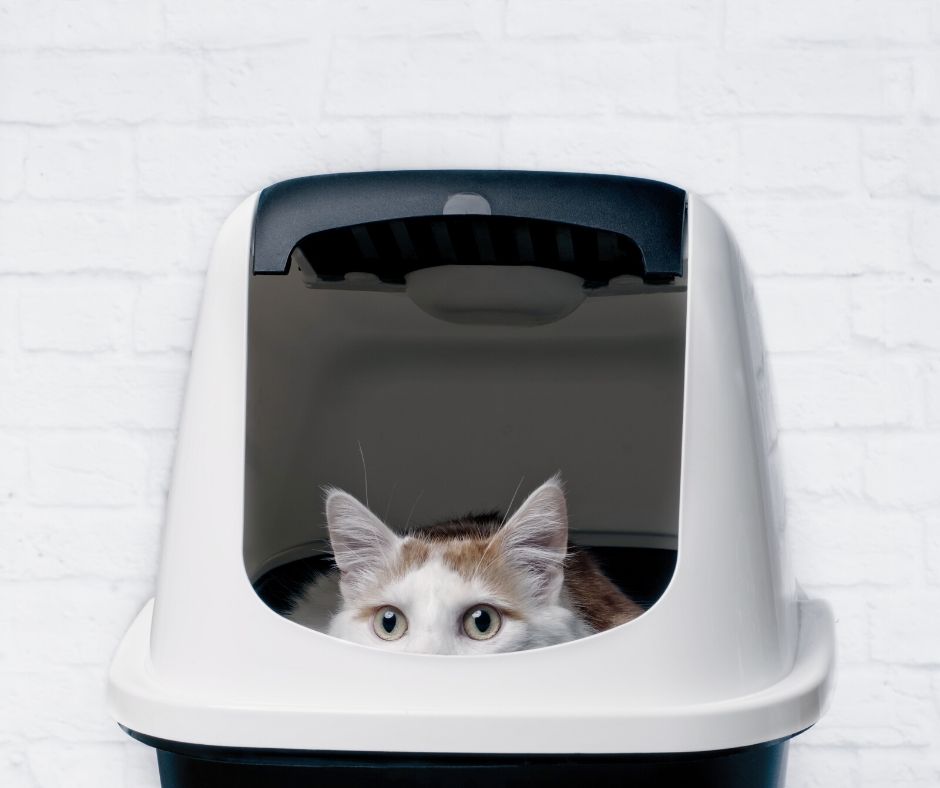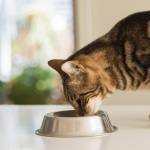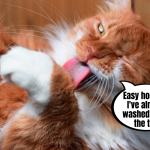To ensure the health of our beloved cats, it’s worthwhile for us to have specific tests periodically. One of the basic and necessary tests – for both young purriers and seniors – is a urine test. This will detect many diseases at an early stage, when they are not yet showing any other symptoms. This allows for quick treatment, avoiding complications and relapses of various diseases. The advantage of this diagnostics is also the fact that it is relatively cheap and painless for the examined person. It is so simple and can do so much good! So let’s go into details.
What is a cat urine test?
A cat’s urine test is mainly done to exclude or confirm urinary tract infections. In addition, it can help diagnose liver disorders and diabetes. It is a physico-chemical test of a liquid, i.e. an evaluation of its smell, colour, pH, clarity and specific gravity. Biochemical components such as protein, blood, glucose or bile dyes are also analysed. In addition, under the microscope, the urine deposit, which may include erythrocytes, leukocytes, epithelials, crystals and even parasites and bacteria, is examined. In the case of some diseases, a culture must be performed.
When should you urinate purr for examination?
Cats may show some signs that you need a urine test. Which should worry us:
– getting the purr out of the litter tray. A wet carpet, bed or chair may indicate illness;
– so do frequent visits to the litter tray;
– going into it without urinating;
– unwilling to do so;
– meowing or squealing while urinating, over-tensioning and visible effort on the part of the cat.
It is essential that you report the cat to the vet.
It’s a good idea to have a urine test if your cat has symptoms such as drinking too much water, sitting over a bowl without drinking, not having an appetite, being senile or being unnatural to her. It’s also a good idea to have a urine test if your cat is very overweight – this could be due to diabetes or kidney problems.
How to take urine for testing?
The vet himself can take the urine for examination by means of a special bladder massage. However, this method is becoming less and less common, mainly because it is unreliable and stressful for the patient. Usually the doctors ask the Caregivers to take a sample of the urine themselves at home. To do this you need a special sterile urine container or a jar of your dreams with a boiling water-treated cap. Remember to wash your hands thoroughly before you do this, as any soiling can distort the test results. This is not too easy for the Caregiver to plan the activity in such a way as to be with the sample in the doctor’s office within two hours at most. Time is of great importance for the quality of such a urine sample. If we know that we will not take the urine sample to the laboratory immediately after it is taken, let’s put a container with valuable contents in the fridge for this time.
And how do we “catch” this priceless sample of our cat’s urine at home? Here are some proven methods:
- taking urine from an empty litter tray (previously boiled with boiling water) – this method can only be used by the caretakers of those cats that are able to get into a container without gravel. Cats are cleaners who bury their litter so this can be a challenge. In this case an ordinary syringe that we buy in a pharmacy or veterinary clinic will be useful. Tilt the tray so that the urine is collected in one of the corners of the tray and use it to draw the liquid into the container – ready. Oh, lucky ones who have such cats:);
- “catching the urine” while peeing – using this method requires a great deal of patience and efficiency from the Keeper, and let’s not hide – quite a reflex:) First we wait for our Friend to enter the tray, and then we try to put it under his tail – preferably a flat and small vessel in which we will catch a stream of urine. You can use a previously brewed vase spoon or a flat bowl from which you can pour the urine into a container or “catch” the stream immediately into a special container for a urine sample, which is a little more difficult. We managed to do this several times with our cat Luis (also because he was a very patient cat and wasn’t stressed out by someone ‘gmering’ at his tail. Besides, we were lucky that he liked to pee backwards to the entrance, so we had an easy access for him to the “interesting” place:) Fact – this method requires manual aquilibristry, but it’s worth trying, because it’s fast and, contrary to appearances, easy – once you’ve mastered it;
- There are special pebble-free double-bottomed cat litter trays available in pet shops, which can work well for urine sampling. Here too, it all depends on your cat’s preferences;
- special gravel – this is a simple method of collecting urine from the litter tray, which of course we brew earlier. Although it looks like silicone gravel, it doesn’t absorb liquid, but it makes everything run down to the bottom of the litter tray and makes it easy to collect urine. It is available from vets and some pet shops, and you will surely find it online somewhere. Most often there is also a pipette for convenient collection of the liquid in the set with such a gravel.
Methods of taking a cat’s urine sample at the vet, as specialists do:
- Catheterization – it’s a fairly simple method, works well for cats, but can be difficult for cats. In some cases it may require anaesthesia. The vet uses a catheter which is inserted into the urethra. The urine is taken directly from the bladder; with this technique, the advantage is high reliability of results but also direct assessment of urethral patency. The disadvantage of this method is the irritation of the mucous membrane of the urinary tract and the discomfort and additional stress of the patient.
- Cystecentesis – a method performed only by an experienced veterinarian. It consists in puncturing the bladder, under the control of ultrasound. In the case of our cat Luis, in whom – due to illness – urine had to be taken regularly, especially for the culture, this method (a frequent need to perform a culture) worked best. The method of choice for urine culture testing, giving the least risk of adulteration. Before testing, we must remember to keep our pet’s bladder full, so that the cat, a few hours before such a collection, can’t get anywhere. That’s why we always make appointments to the vet for like the previous morning hours, and the night before the visit, we covered the tray to make sure the cat’s bladder is full in the morning. The advantages of the
Cystocentesis are without a doubt:
- no contamination of the sample – it’s the best way to get urine for laboratory tests, including bacteriological tests on the cat,
- often much simpler than cat urinating in a tray,
- easier than catheterization,
- generally does not require an anesthetic.
What method we should choose depends primarily on the recommendations of the vet, what the sample is to be used for (or, for example, a more “demanding” seeding) and also on our capabilities – if we are not able to do this alone at home, it is known that everything is in the hands of the vet.
How often should I urinate my cat?
To take good care of your cat’s health it would be a good idea to have her urine test every twelve months. As we’ve already mentioned, it can detect diseases that are not yet showing any other symptoms. For older cats that are more than ten years old and are more likely to have urinary tract conditions, it’s definitely worth having this treatment once every six months. To avoid several visits to the practice, urine can be taken before the check-up without waiting for the doctor to order it – and here you’ll need some advice on how to take it at home, as we’ve written about before.
You may need a urine test more often if your cat has something wrong or is suspected of having something wrong. For example, a urine test is definitely a compulsory test if you suspect any urinary tract problems – this was the case with our dear Luis.
However, in order to diagnose our pet well, we should always strive to obtain as much information as possible and analyse it carefully in relation to the clinical symptoms found in the animal, as well as in combination with the results of other laboratory tests. Only such a thorough assessment can provide valuable information to the diagnosis and at the same time avoid misinterpretation and misdirection of treatment.
It all sounded very serious and medical, but these are the facts loved by cats – diagnostics and prevention are the basis. Once a year we get tired of taking this unfortunate urine for tests, once a year our cat will be amazed and a little bit tired of looking at our actions under its tail – but thanks to this we can extend or even save our Friend’s life. Remember, if you are terrified of this, you can always go to the vet.
And you, my dear fabCats, what method of urine sampling do you practice? 





